| Listing 1 - 10 of 113 | << page >> |
Sort by
|
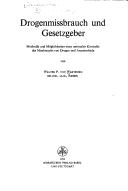
ISBN: 376430684X 9783764306847 Year: 1974 Publisher: Basel: Birkhäuser,
Abstract | Keywords | Export | Availability | Bookmark
 Loading...
Loading...Choose an application
- Reference Manager
- EndNote
- RefWorks (Direct export to RefWorks)
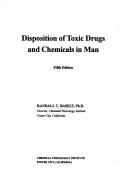
ISBN: 0962652334 Year: 2000 Publisher: Foster City (Calif.) : Chemical toxicology institute,
Abstract | Keywords | Export | Availability | Bookmark
 Loading...
Loading...Choose an application
- Reference Manager
- EndNote
- RefWorks (Direct export to RefWorks)
Drug toxicity. --- Toxins --- Toxicity.
Book
Year: 1967 Publisher: New York, N.Y.: New York Academy of Sciences,
Abstract | Keywords | Export | Availability | Bookmark
 Loading...
Loading...Choose an application
- Reference Manager
- EndNote
- RefWorks (Direct export to RefWorks)
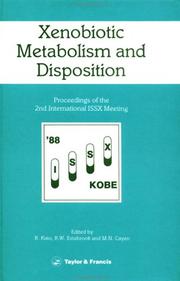
ISBN: 0850667372 9780850667370 Year: 1989 Publisher: London: Taylor & Francis,
Abstract | Keywords | Export | Availability | Bookmark
 Loading...
Loading...Choose an application
- Reference Manager
- EndNote
- RefWorks (Direct export to RefWorks)
Xenobiotics --- Pharmaceutical Preparations --- Drug Toxicity --- Xenobiotics
Book
Year: 2011 Publisher: Bruxelles: UCL,
Abstract | Keywords | Export | Availability | Bookmark
 Loading...
Loading...Choose an application
- Reference Manager
- EndNote
- RefWorks (Direct export to RefWorks)
Busulfan is an alkylating agent that blocks the cell cycle. It was synthesized in 1950, it has been used for more than thirty years in association with cyclophosphamide or melphalan as an alternative to total body irradiation as conditioning treatment for hematopoietic stem cell transplantation. Oral busulfan (Myleran®) has a large inter- and intra-individual variability. This variability leads either to an under-exposure resulting in a lower efficacy or to an over exposure resulting in a more important toxicity. The major side effects of busulfan are gastro-intestinal disorders, pulmonary toxicity or hepatic veno-occlusive disease. Moreover, the tablet low dosage is not favourable to a good compliance. The launching of a intravenous form of busulfan partly solves these issues; the poor aqueous solubility and instability of busulfan has actually delayed the development of this i.v. drug now available as Bulsilvex®. Advantages are a lesser pharmacokinetic variability and the limitations of side effects. The manufacturing costs of the intravenous form are high but partly compensated by the fact that contrary to the oral form, a therapeutic monitoring is not required Le busulfan est un agent alkylant bloquant le cycle cellulaire. Synthétisé en 1950, il est utilisé, depuis plus d’une trentaine d’années, en association avec le cyclophosphamide ou la melphalan dans le conditionnement des greffes de cellules souches hématopoïétiques comme alternative à l’irradiation corporelle totale. Le busulfan administré par voie orale (Myleran®) présente une forte variabilité inter- en intra-individuelle provoquant soit un sous-dosage résultant en une diminution de l’efficacité, soit à) un surdosage ayant pour conséquence une toxicité plus importante. La toxicité du busulfan se manifeste, par exemple, par des troubles gastro-intestinaux, une toxicité pulmonaire ou encore une maladie veino-occlusive hépatique. Le conditionnement complique également la compliance. Une forme intraveineuse du busulfan est une solution à ces différents problèmes. Sa faible solubilité et son instabilité dans l’eau justifient l’avènement tardif du busulfan sous forme intraveineuse, commercialisée sous le nom de Busilvex®. Les avantages sont une moindre variabilité pharmacocinétique et la limitation de certains effets indésirables. Cette forme plus onéreuse que la forme orale ne nécessite pas de monitoring thérapeutique, permettant ainsi une certaine compensation des coûts engendrés pour sa production
Busulfan --- Hematopoietic Stem Cell Transplantation --- Drug Toxicity
Periodical
Abstract | Keywords | Export | Availability | Bookmark
 Loading...
Loading...Choose an application
- Reference Manager
- EndNote
- RefWorks (Direct export to RefWorks)
Drugs --- Drug Toxicity. --- Safety measures --- Side effects
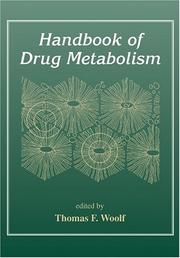
ISBN: 0824702298 9780824702298 Year: 1999 Publisher: New York, NY : Marcel Dekker,
Abstract | Keywords | Export | Availability | Bookmark
 Loading...
Loading...Choose an application
- Reference Manager
- EndNote
- RefWorks (Direct export to RefWorks)
Pharmacokinetics --- Drug Interactions --- Pharmacogenetics --- Drug Toxicity --- Drugs --- Metabolism --- Drugs - Metabolism
Book
Year: 2010 Publisher: Bruxelles: UCL,
Abstract | Keywords | Export | Availability | Bookmark
 Loading...
Loading...Choose an application
- Reference Manager
- EndNote
- RefWorks (Direct export to RefWorks)
Drotrecongin alpha activated, marketed under the name of Xigris®, is a drug for the treatment of the septic shock in the adult presenting with at least two organ failures. This drug was put on the market under exceptional circumstances, therefore it is discussed every year. Indeed, when the drug was put on the market, only one study had shown the effectiveness of Xigris®. Thereafter, many studies have failed to show efficacy in other patient groups. On the other hand, it was shown that Xigris® could involve serious adverse drug effects such as hemorrhage. This serious undesirable effect weighs much in the benefit/risk balance of Xigris®. The different studies published helped to clearly define the patients in which the drug should be used (for example …). The question remains open: Is it necessary to continue to use this drug for the treatment of the severe sepsis knowing that it has a big risk of undesirable effect and that there is no existing alternative for the moment? Studies are still ongoing and further results will be available in 2011 La drotrecogin alpha active, commercialisée sous le nom de Xigris®, est un médicament indiqué dans le traitement du choc septique chez l’adulte présentant au moins deux défaillances d’organes. Ce médicament a été mis sur le marché avec circonstance exceptionnelle, ce qui signifie que sa balance risques-bénéfices doit être rediscutée chaque année. En effet, lors de l’obtention de son AMM (autorisation de mise sur le marché), seule une étude avait démontré l’efficacité du Xigris®. Depuis, les études réalisées n’ont pu démontrer une efficacité supérieure à celle déjà annoncée. Par contre, il a été montré que le Xigris® pouvait entraîner des risques de saignements sérieux. Cet effet indésirable sérieux pèse lourdement dans la balance bénéfice/risque du Xigris®. Les différentes études ont permis de préciser les conditions d’utilisations strictes de cette molécule (à savoir …). En terme de pharmacovigilance la question est donc ouverte : faut il continuer à utiliser ce médicament pour le traitement du sepsis sévère sachant qu’il a un risque important d’effet indésirables et qu’il n’existe aucune alternative pour le moment ? Des études sont toujours en cours et les premiers résultats seront publiés pour le deuxième quadrimestre 2011
Sepsis --- Drug Toxicity --- Shock, Septic --- Adult --- drotrecogin alfa activated
Book
Year: 2012 Publisher: Bruxelles: UCL,
Abstract | Keywords | Export | Availability | Bookmark
 Loading...
Loading...Choose an application
- Reference Manager
- EndNote
- RefWorks (Direct export to RefWorks)
Drug Toxicity --- Adverse Drug Reaction Reporting Systems --- Pharmacists --- Pharmacovigilance
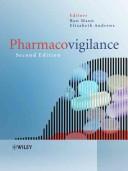
ISBN: 0470018038 9780470018033 Year: 2007 Publisher: Chichester: Wiley,
Abstract | Keywords | Export | Availability | Bookmark
 Loading...
Loading...Choose an application
- Reference Manager
- EndNote
- RefWorks (Direct export to RefWorks)
Pharmacoepidemiology --- Pharmaceutical Preparations --- Drug Toxicity --- Pharmacoepidemiology --- Product Surveillance, Postmarketing
| Listing 1 - 10 of 113 | << page >> |
Sort by
|

 Search
Search Feedback
Feedback About UniCat
About UniCat  Help
Help News
News